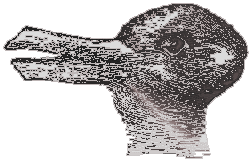 Gregory Eiselein
Gregory Eiselein Gregory Eiselein
Gregory Eiselein
5. During the course of the semester we have encountered a number of different ways to tell the story of a life. These different genres include: novel, autobiography, corrido, essay, drama, fictionalized autobiography, autobiographical fiction, family story, slave narrative, short story, poetry, graphic novel, etc.
Write an essay in which you focus on one particular text to discuss the connection between an author's genre and the content and purpose of his or her story. Is the kind of story he or she tells appropriate to the events and ideas in the story itself? Why or why not?
6. Consider any of the texts that we have read so far this semester. Which one of these texts is the most political? Why? What are its political aims? How does it try to use literary writing to achieve that aim?
7. Compare Frederick Douglass to Vladek Spiegelman. In what ways are they similar as people, characters, historical figures, story-tellers, and heroes (or anti-heroes)? In what ways are they different? What seems significant about these similarities or differences?
8. American ethnic literature seems to have a variety of relationships to American history. Some texts seem to aim to correct the historical record, to add to it, to rewrite it in a more truthful manner, or to remind readers about it in an especially emotional or political manner; other literary texts seem to fictionalize, distort, or play with historical facts and events; and still other literary texts seem to complicate our entire understanding of the border separating truth from fiction or history from storytelling. Using three texts studied this semester, discuss the different ways American ethnic literature uses or incorporates history ("what really happened" and the evidence that proves it, historical events, real people, or documents, etc.).
9. This question will also take some creativity and imagination. Use the voice, style, and attitudes of any author listed in one column I to retell the story of one of the characters listed in column II. For example, have Frederick Douglass--using his style and his attitudes--tell Zitkala-Sa's story or Spiegelman's style to tell Mai Nguyen's life.
I: Art Spiegelman, Sandra Cisneros, Zora Neale Hurston, Adah Isaacs Menken, Frederick Douglass
II: Mai Nguyen, Thomas Builds-the-Fire, Beneatha Younger, Zitkala-Sa, Consorcio
10. Discuss the following questions, using an analysis of works by three of the following authors: Spiegelman, Cisneros, Cao, Menken, Alexie, Zitkala-Sa, Douglass, or Hansbery. What is the role of religion within those three texts? What is the relationship of religion to ethnic identity and/or racism in those three texts?
11. Discuss the representations of women in A Raisin in the Sun, Caramelo, and Monkey Bridge. What types of female characters populate these books? How do these writers view these characters? What narrative, thematic, or political purposes do they serve in each of the books?
Greg's Home | Department of English | Graduate Studies | Cultural Studies | Visual Culture | Kansas State University |
This page was updated on 4 May 2004. Other pages on this site may have been updated more recently.
These pages are copyright © 1995-2004 Gregory Eiselein.